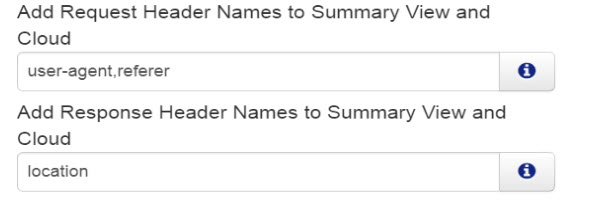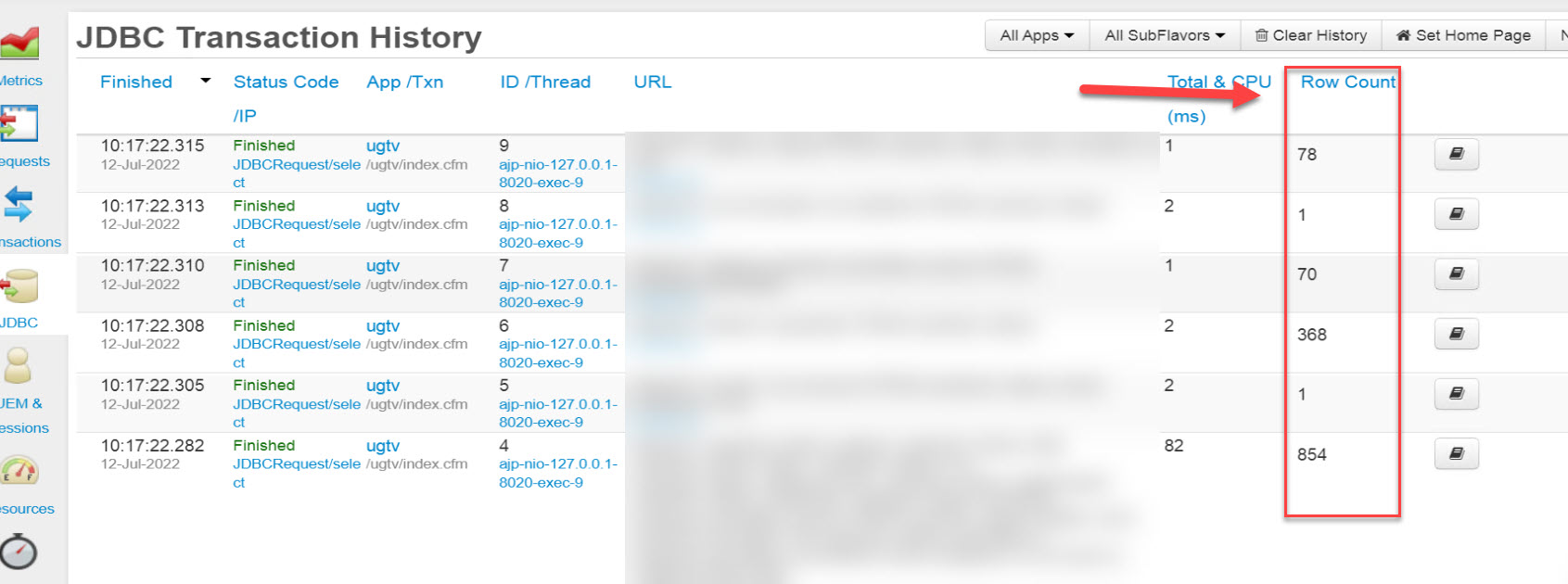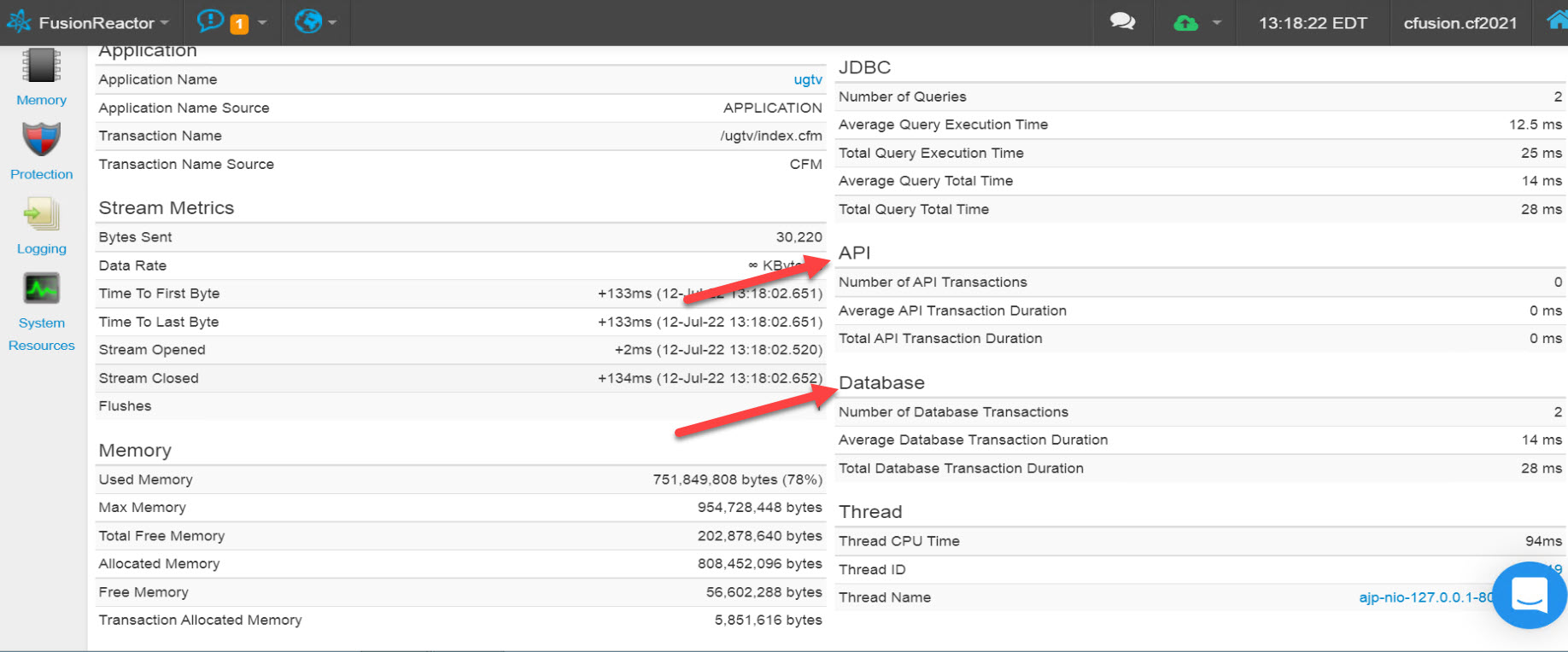What's new FusionReactor 8.8.0, released Jul 12, 2023
Note: This blog post is from 2022. Some content may be outdated--though not necessarily. Same with links and subsequent comments from myself or others. Corrections are welcome, in the comments. And I may revise the content as necessary.Good news for FusionReactor users: a new version, 8.8.0, has just been released. You can see a list of several bullet points about it in the release notes. Most of the improvements will benefit those using the traditional on-premise version of FR, while the couple that refer to FR Cloud are rather minor.
TLDR: If it's enough for you to know that FR is now updated and those bullets may suffice, you now have what you need to know. :-) In this post, I want to expand on the very brief bullets in those release notes, to give more context and screenshots.
FWIW, I have no inside info or advanced knowledge of the release: this comes from my own assessment of things as I just applied the update this morning. As such, I could be wrong on some points, or may need to come back to clarify something. But in the meantime, I hope this overview may help folks, as sometimes the single bullets in the release notes can leave you wondering. :-)
Before I get into the update's new or changed features, note also that I am presenting the items in the order that they appear in the release notes bullet points. They are not in the order I would choose to highlight them. :-)
Also, if you may wish to know more about using FR, see the last section here where I offer still other ways I have long helped people make the most of using it.
On getting the FusionReactor Update
First, a quick note about obtaining and installing FR updates. If you are on an FR release from recent years (8.1 or above), you will see a notification appear at the top of your FR pages telling you there's a new update, and that offers a link to download it. Others can just go to the downloads page.
Either way, you can then choose between the "automated installers" (if that's what you have traditionally used, which uses the FusionReactor AM Service and the FRAM UI traditionally implemented at port 8087), or you can get just the fusionreactor.jar (especially suited to those preferring manual/scripted/minimalist installs).
For more, see the available docs (for automated and manual installation), as well as the installation videos. I also have a 2018 post on the topic of updating FR.
Now let's move on to each of the update's new or improved features. Below, I quote each of the release notes bullets and then elaborate on them.
Warning: "Upon upgrade, only FusionReactor 8.8.0 dashboards can monitor 8.8.0 instances"
Actually, this first point is not a bullet in the listed changes but instead a heading atop the 8.8.0 section of the release notes.
And note that it's heads-up of concern only to those running the FR Enterprise Dashboard feature, which is a) only in FR Enterprise or Ultimate and b) an optional feature one may or may not bother to setup. If you have set it up, then head the warning and additional bullets shown there, about the version-specific matters related to this latest update. Note that the Enterprise Dashboard (ED) is an on-premises feature of FR, having nothing to do with the FR Cloud and its "dashboards".
And if you may consider "looking for the ED" now among your on-premises FR UI or UIs, note that the ED exists and can be setup in ANY FR instance or even in a FRAM instance (perhaps even on a machine other than where you have your FR instances monitoring CF, Lucee, or other Java apps). Notice that (on Enterprise and Ultimate) there is a small "globe" icon at the top left of the on-prem FR UI. Bottom line: if you do NOT see or use the ED, then you don't need to worry about this first issue.
New Feature: "CF metrics are now sent to the cloud."
This may be (currently) the least-interesting "new feature" (indeed, all the others are shown on the release note to be "improvements", technically). You will see no change in the FR Cloud UI yet. I asked about this, and the change is in preparation for a coming new set of "dashboards" in the FR Cloud UI, not yet implemented with this change.
What is FR Cloud? BTW, if you see this discussion of FR "Cloud" and wonder, "what's that?", it's basically an EXTENSION of your current on-premises implementation of FR (available to those using FR Enterprise or Ultimate). For more on that, including migrating to it, see this page on the FR site, where it's also referred to as FR SaaS. It also includes a 10-min youtube video providing an overview of FR Cloud.
Improvement: "Send specified request or response headers to the cloud."
This is basically an expansion of a new feature added in 8.7.5 (and about which I never did a blog post, though I should have, as even then it was one of my favorite new features added to FR in some time). With THAT feature (added in 8.7.5), you could now nominate any header (request or response) that you wanted to appear on the front page list of requests (such as requests>activity or requests>history).
As for what's new, like the feature above this is more about the info now ALSO being sent to the cloud, in anticipation of a new feature to show them there. For now, they don't show up in any special way in the cloud.
But for those who didn't notice this feature as added in 8.7.5, let me show what it's about, cuz it's cool!
About this feature as added in 8.7.5
Consider if you may wish to focus on "user-agent" of all incoming requests. Of course you could always drill into each request's details page and choose its "headers" tab (in both the on-prem and cloud UIs).
But with this new feature as of 8.7.5, you could configure FR to show that and any other desired header(s) on all the FR request list pages, where it/they would show up under the URL and query string. Same with if you wanted to log the "location" response header for a 302 or 301 redirect.
In the screenshot below, I have configured both "user-agent" and "referer" request headers as well as the "location" response header. Notice how each appears, if configured. And of course, a request that is not a 302 or 301 redirect won't have such a "location" response header, just like one that's not linked to from another web page won't have a "referer": 
As for how to set this up, note that it's done in the Request>settings page. As of FR 8.7.5 or above, there is now this new pair of fields at the bottom of that page (the word "and Cloud") is new in 8.8.0. Here you can see how I configured those headers to be shown above:

NOTE first that you can indicate multiple values separating them with commas (or semi-colons, as indicated by clicking the "i" icon to the right of the field).
Note also ESPECIALLY that these are case-sensitive. They must match whatever is shown in the FR "headers" tab for a request having such headers. So notice that I have it as "user-agent", not "user agent" nor even "User-agent" (and "location" not Location), even though in your browser Dev tools you may well see these listed as User-agent and Location. If you don't provide the correct case then the headers will simply not appear on the request list pages.
Improvement: "Row Count is now displayed in JDBC history lists."
This is another one of those "little things" that may delight some. FR has for many years shown the row count on the request details page and its jdbc tab.
This new feature is instead about the info now being shown on the pages that list JDBC transactions ACROSS requests, such as JDBC>JDBC History, or >JDBC Error History or >Longest Transactions, etc. All these now show a row count. Consider the screenshot below: 
A couple of notes on this: I notice the row count col is also shown on the jdbc>activity page, which would be about running queries. But I've not yet caught a query running long to see if it somehow is really tracking the rowcount as the query proceeds (which is possible, at least in terms of how many rows have yet been sent over the JDBC driver). It may be that this is an oversight and it's NOT meant to be shown on that page.
Finally, a slight niggle is that the row count column is NOT yet shown if the JDBC requests are viewed using the Transactions pages, as in Transactions>History pages, even when "jdbc" is selected as the transaction type at top of such a page. Again, that may be oversight or may be intentional.
Improvement: "Implemented the ability to view graphs as smoothed/averaged."
This is another one of those "hidden gem" type features that may delight some. If you've used the various FR graph pages, you may have wished that you could see them depict not just the actual values (the values graphed) but instead an AVERAGE of them, over the selected time.
That is now possible, using a new "Display Average" button. This is offered on pages like Requests>Time Graph or Resources>Memory Heap or Resources>CPU Graph. (And while those can be linked to from Metrics>Web Metrics graphs, via a hyperlink under each of its graphs, this average feature is NOT yet offered on the Web Metrics graphs themselves.)
Again, if you click the new "Display Average" button, this will toggle on/off showing the AVERAGE of values vs the actual datapoints. In many graphs, the difference in what's shown may not be that significant. When the graphed values vary sharply over time, then this average may be more valuable. (I have long wished they'd instead show a single line on the graphs representing the average, but this is better than no average at all). Here is a screenshot showing the Resources>Memory Heap page, and the new button:

Improvement: "Increased the security of user passwords, using a PBKDF-2 algorithm."
This feature is of course primarily a security feature, which might generally have no affect on one's day-to-day use of FR. But recall the first point above about the inability of the ED to work with older FR versions. I suspect this change is related to that impact.
Improvement: "DB and API time columns added to the table view of request log in the archive viewer"
To be clear, the DB and API time columns are themselves not "new", in that they were added to the UI first as of FR 8.7.4--more on that in the next point). And as of 8.7.7 this data had ALSO been added to the FR request logs, which was something I blogged about in more detail when that release came out.
But while 8.7.7 had added those as the last columns of the FR request log, a problem was that the FR Archive Viewer had not been updated in 8.7.7 to SHOW those new columns. (The Archived Metrics page, which was added a few years ago in FR 8.7.2, allows VIEWING of all FR logs as graphs or text. It can be accessed a few ways in the FR On-prem UI, such as Metrics>Archived Metrics, )
Now as of 8.8.0, those two new columns ARE displayed. Here's a screenshot:

For those who use the Archived Metrics feature and might look at the request log display, it's a helpful addition.
Improvement: "DB and API time summary now included on the main tab of a transaction."
Finally, this last setting ALSO expands on some previous work. I'd mentioned above how FR 8.7.4 had added new display of DB and API time columns in various request list pages of FR. I had blogged more on that then.
What's new in 8.8.0 is that this info is now repeated in the DETAILS pages of a new request, on the "main" tab, via new sections shown in the bottom right, below the current JDBC, thread, and CPU sections. Here is a screenshot:

Again, for those who may tend to dig into that request details page and wanted to be able to see this break-out of especially the API time (since the JDBC time was indeed already there), this is a nice addition.
Conclusion
I hope you enjoyed this tour of what's new in FR 8.8.0, and the expansion on the modest bullet points in the release notes.
To be clear, I don't work for Intergral, the makers, but I am a LONG-time fan and love helping people know more about it, just as I help folks use it almost daily in my troubleshooting consulting.
If you'd like to hear more about using FusionReactor, I've done several hour-long webinars over the years, and those are available as a playlist on my youtube channel. I've also done over 50 FR blog posts here, as well as posts on the FusionReactor blog, such as Changing FusionReactor's "Slow Request Threshold", Why and How.
As always, I welcome comments and corrections to this post.
For more content like this from Charlie Arehart:Need more help with problems?
- Signup to get his blog posts by email:
- Follow his blog RSS feed
- View the rest of his blog posts
- View his blog posts on the Adobe CF portal
- If you may prefer direct help, rather than digging around here/elsewhere or via comments, he can help via his online consulting services
- See that page for more on how he can help a) over the web, safely and securely, b) usually very quickly, c) teaching you along the way, and d) with satisfaction guaranteed








There are no comments for this entry.
[Add Comment]